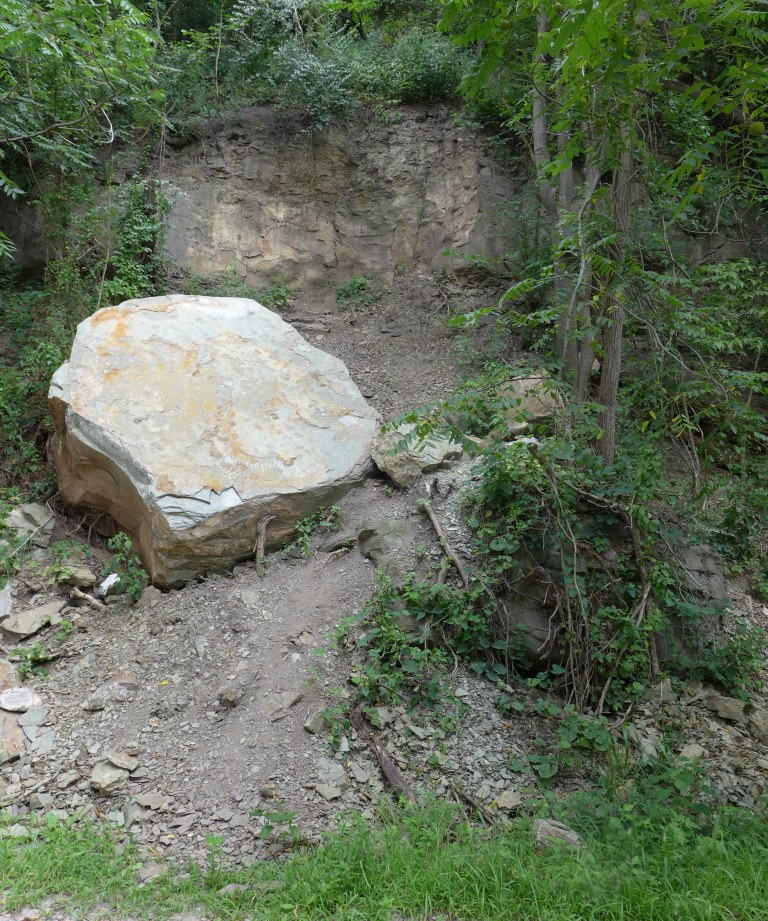
12 December 2023
Spring is landslide season in Pittsburgh. Winter is a good time to get ready for it and there’s no time like the present. With climate change increasing Pittsburgh’s rainfall and downpours, our dissolve-in-water bedrock is getting wet faster.
This morning the Pittsburgh Post-Gazette reported that, thanks to a $10 million federal grant, the City of Pittsburgh is about to begin two landslide mitigation projects along city streets on Mount Washington and is putting a third one out to bid.
Thankfully there is money, though not a lot of it, for municipalities to prevent landslides on our roads, but if you live above a landslide and you own the land that slid you’re out of luck. The slide eventually takes your house with it.
Pittsburgh is especially prone to landslides because of our geology.
Two natural conditions occurring in western Pennsylvania are most responsible for landslide problems throughout the area. First, in many places the bedrock consists mainly of shales and claystones. The primary culprit is a thick, 40- to 60-foot rock layer called the Pittsburgh red beds.
[Red bed]rock rapidly falls apart in water and tends to lose strength with each seasonal freeze-thaw and wet-dry cycle. Water that collects in the rock has little chance to drain and subsequently helps make the slope unstable from the inside out.
The second naturally occurring condition responsible for landslides is western Pennsylvania’s landscape, which is dominated by steep hills and valleys.
[Hillside] soils normally are stiff but very prone to downhill movement. This movement normally is imperceptibly slow. During the spring, however, the soil often becomes very wet from thawing snow and spring rains and the creeping can accelerate into a full-blown landslide.
— Pittsburgh Geological Society: Landsliding in Western Pennsylvania
It is easy to find red bed outcrops on our hillsides. Here’s one in Schenley Park where there used to be topsoil but the red bed, formerly beneath the surface, eroded and left this tree on stilts.
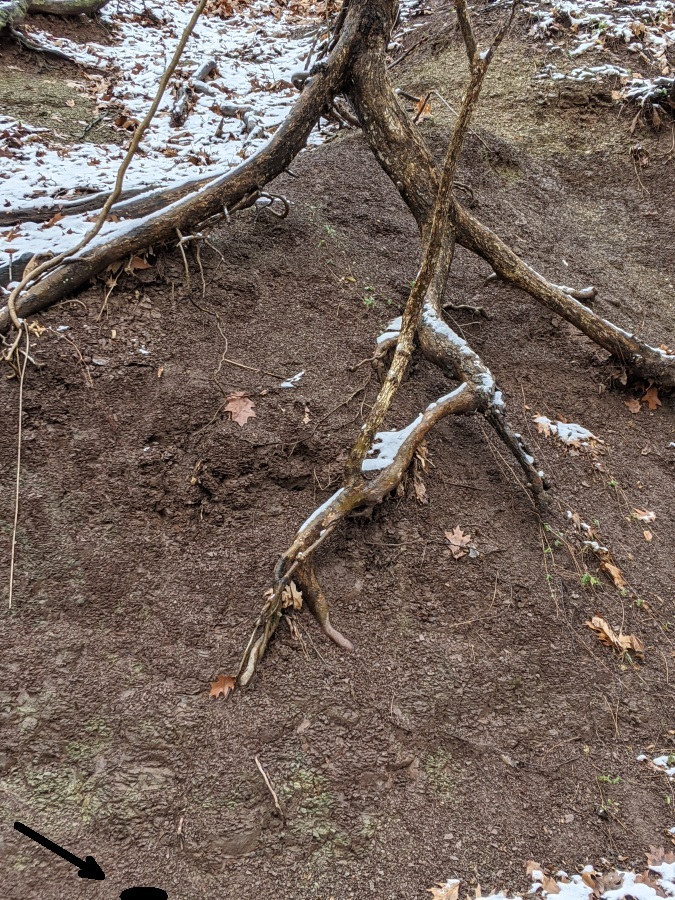
A closer look at the red bed rock shows that it broke into tiny pieces — little crumbles — when it got wet. My foot is in the photo for scale.
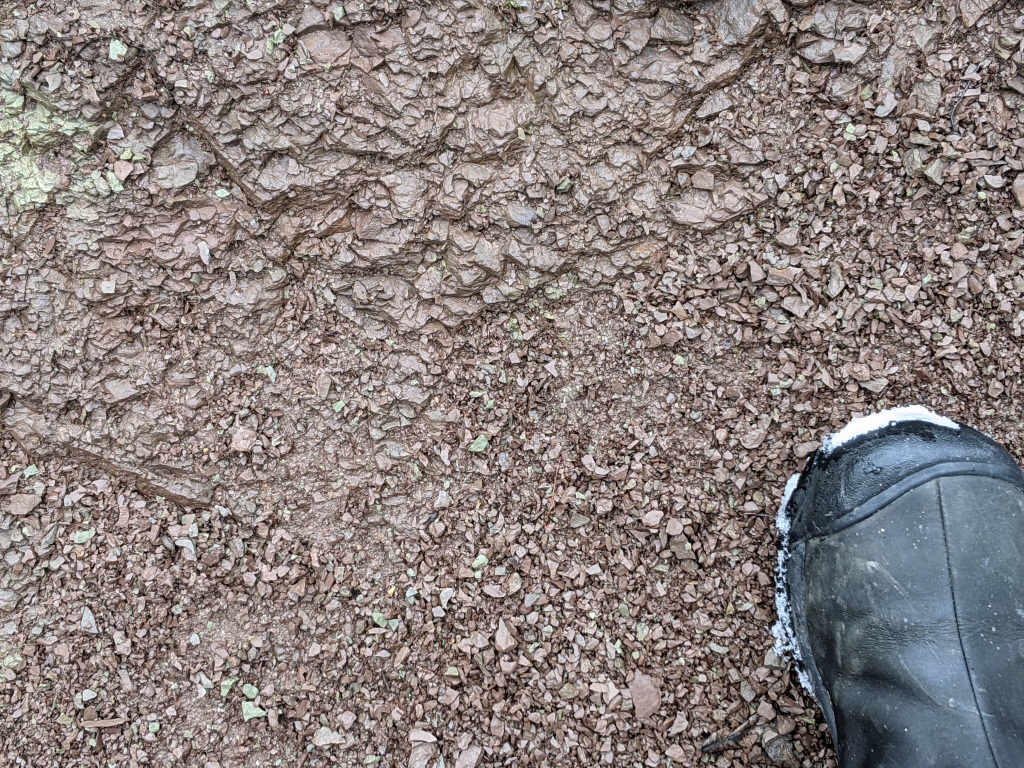
The location of these photos is marked on a Google topo map of Schenley Park below. Notice how steep the hillside is where the red bed is exposed. Uh oh!
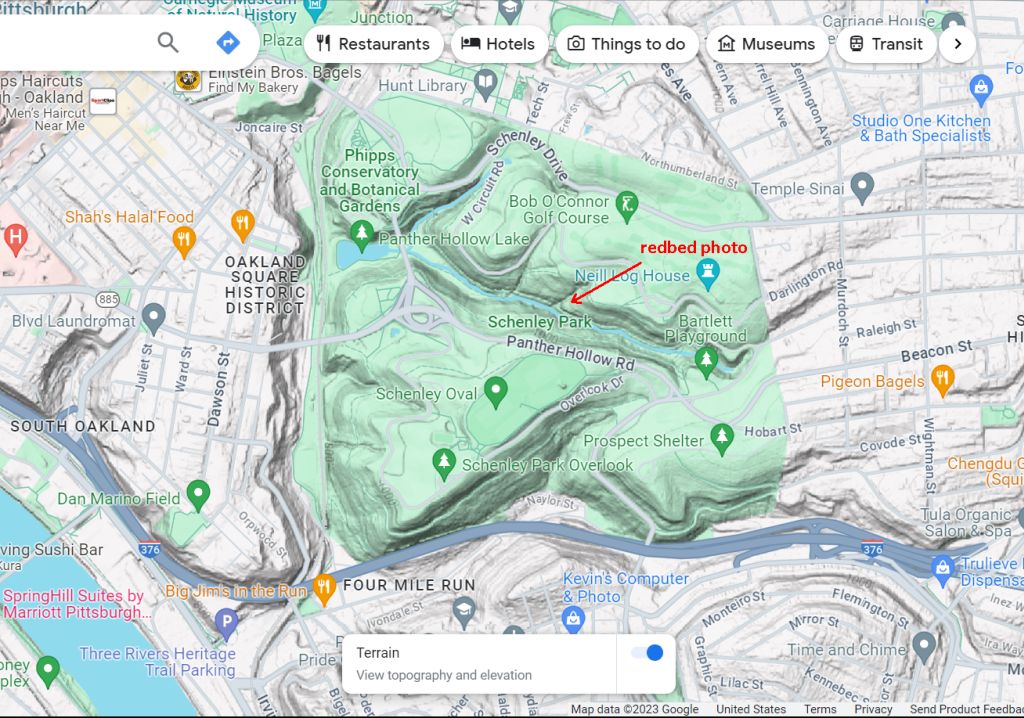
Because of the prevalence of Pittsburgh red bed rock there are landslide problems throughout Allegheny County. Click here or on the map image below to see the details. Keep in mind that the colors red and orange are bad. The only safe color is yellow.
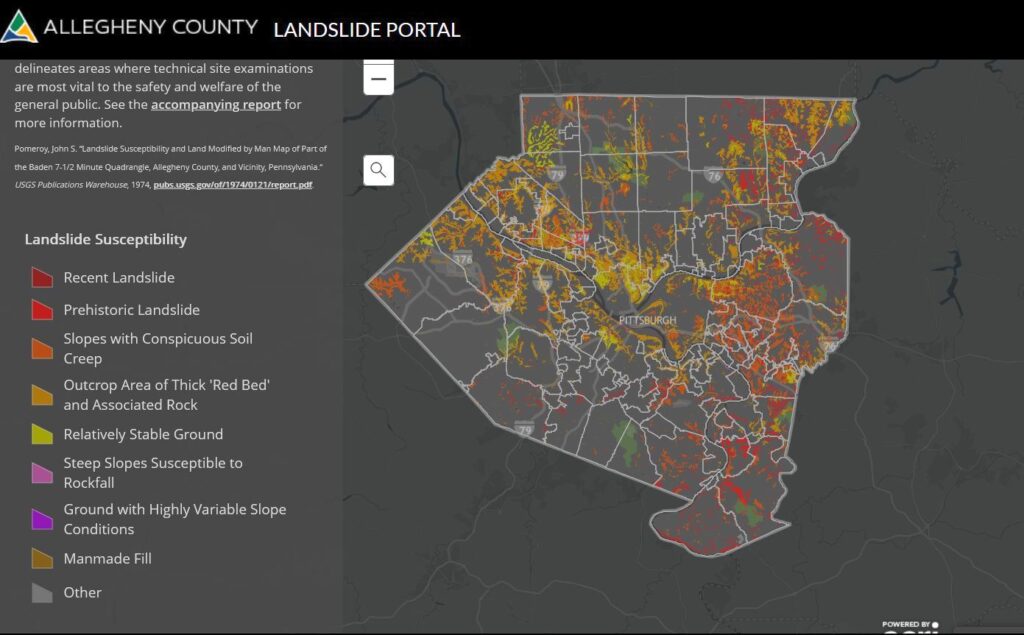
And just for emphasis, check out this video of a house that slide down the hill in 2019.